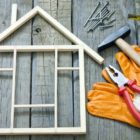6 Expert Tips for New Home Baristas
When preparing a cup of joe, most people have divided opinions on how they should prepare it, what precisely comprises a perfect coffee, and the gadgets to use. However, most baristas agree that the ideal cup of coffee is the one you enjoy. While you can debate on whether to use the pour-over or French press to brew your coffee, the truth is that you can use any equipment you have on hand or any method. Whether you love preparing your coffee with an automatic coffee maker or manual processes, both processes are helpful, but each comes with pros and cons. Keep on reading to learn how to be a proficient barista at home and brew the perfect cup of coffee.
1. Identify Your Coffee Bean
Identifying coffee beans’ origin is vital. The coffee beans’ region defines the coffee’s flavor, strength, and acidity. Usually, Africa produces acidic and dark beans, while South American coffee beans are medium roast and contain negligible acidity. Another thing to note is that dark beans have a bitter taste, while highly light beans lack the balance and sweetness needed to craft a barista-quality espresso. If you are looking forward to brewing the ideal cup of coffee, you might consider checking the Costa Rica coffee flavor profile as it meets most coffee addicts’ demands.
2. Buy Fresh Beans
Coffee is best when you brew the beans within the first few days after roasting. If you can’t roast the beans yourself, you should consider buying them from a local roaster to enjoy the freshness. Also, avoid buying bulk coffee from store display bins. Remember that roasted beans’ worst flavor busters are bright light and oxygen. So, if you are buying coffee beans from the supermarket, consider buying the owns sold in vacuum-sealed and sturdy bags or packaged by quality-conscious roasters. What’s more, store the coffee beans in an airtight container after opening. Here is how you can safely store your coffee.
3. Grind the Coffee Well
Grinding size is crucial because it impacts the beans’ aroma and flavor extraction rate. The extraction rate is fast if you use fine-grind size. It is also essential to regulate the extraction degree because the first compounds to be extracted create acidic and fruity flavors. The subsequent ones offer sweetness, and the final ones are responsible for astringency and bitterness. When it comes to coffee brewing, the ultimate objective is to get well-balanced with some bitterness, acidity, and sweetness.
4. Invest in Good Equipment
Although good equipment doesn’t assure a barista-quality espresso, it helps you craft it. So, having an espresso and grinder machine is advisable. A grinder enables you to assess how much you can make from the coffee beans. When buying an espresso machine, consider the one that lets you control the pressure, temperature, and water flow with ease.
5. Pay Attention to Temperature and Water Quality
Using poor-quality water can damage your brewing machine. Also, water quality plays a crucial part in how coffee tastes. Hard water results in dull brews, while soft water makes the coffee have a flat taste. Most baristas say that the best idea is to use water with a neutral pH. Using bottled water is a good idea. Regarding the temperatures, it is worth noting that the hotter the water, the quicker the aromas and flavors extract. Consider sticking to temperatures of about 194–199ºF.
6. Use a Measurement Scale
Failure to use a measurement scale is one of the common mistakes made by most home baristas. You may be tempted to follow your instincts when preparing a cup of coffee from the comfort of your home. Probably, you think accuracy is not vital because you are not preparing it for customers. The truth is that you will undoubtedly appreciate the pros that come with using a measurement scale. When preparing professional coffee, you should not involve any guesswork.
7. How to Craft the Best Cup of Coffee
One of the best ways to set a good mood throughout the day is to drink the perfect cup of coffee in the morning. However, depending on a barista to prepare you a cup of joe daily may not be ideal if coffee shops are closed, as previously witnessed following the coronavirus pandemic. In that case, brewing the coffee yourself remains the perfect option. And with the tips mentioned above, you can easily craft a barista-type of coffee straight from your home.
Related Posts:
About Author
Mike Fisher
Mike Fisher is Coquedis’s senior staff writer reporting on technology, business, law, and, on occasion, other lifestyle topics. Previously, he worked as a reporter for the Massachusetts Street Journal and got his start at newspapers in New York, Connecticut, and Massachusetts.


